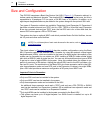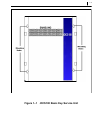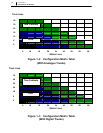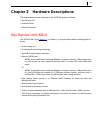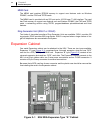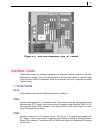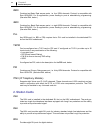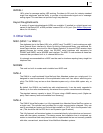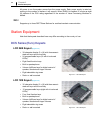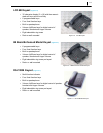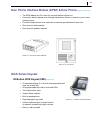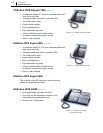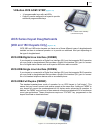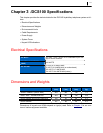
2-5
6MWSLI
100V pulse for message waiting LED working. Provides six SLI ports for industry–standard
single line telephones and the ability to provide a loop-disconnect signal and a message-
waiting signal. This card does not provide Long Line protection.
Keyset Daughterboards
A variety of keyset daughterboards (KDB) are available. If installed in a digital keyset con-
nected to the Basic KSU, a KDB provides a second DLI or SLI port. (See Station Equipment
,
below, for full details.)
3. Other Cards
MISC (MISC 1 or MISC 2)
One dedicated slot in the Basic KSU is for a MISC card. The MISC 1 card contains one addi-
tional External Music interface for Music-On-Hold or Background Music, one additional Ex-
ternal Page interface, one circuit for Alarm Sensor Detection, 4-channel DTMF receiver, three
general–purpose dry contact relays, two RS-232C serial interfaces with connectors for
PCMMC and SMDR, and a MODEM card interface. The MISC 2 card contains all these fea-
tures and also provides a built–in, 4–channel AA function.
It is strongly recommended that a MISC card be used in situations requiring heavy single line
telephone use.
MODEM
This card is a built–in modem and is installed on a MISC card.
SVMi-4
The SVMi-4 is a self-contained Voice Mail and Auto Attendant system on a single card. It is
designed to meet the demands of the sophisticated voice mail user without sacrificing sim-
plicity. The SVMi-4 may act as an Auto Attendant system only, a Voice Mail system only, or
both.
By default, the SVMi-4 can handle two calls simultaneously. It can be easily upgraded to
handle up to four calls simultaneously. No external line or power connections are necessary.
The standard memory capacity is about 3.5 hours using a 64MB memory card. (Higher ca-
pacity Flash memory cards are available from Samsung.)
SVMi-8
The SVMi-8 Voice Mail system is a fully integrated Auto Attendant/Voice Mail/Fax system on
a single card. This optional card provides four or eight communication channels. Only one
card is permitted per system and it should be installed in a “DCS” slot in the Expansion cabi-
net. (This should be the first DCS slot in an Expansion type B cabinet.)
This fully featured, self-contained system is connected directly to the data bus and communi-
cates with the system processor. This design means that installation time is minimised, op-
eration is streamlined and many features can be implemented that are not normally possible
with older, conventional, stand-alone Voice Mail/Auto Attendant systems.



